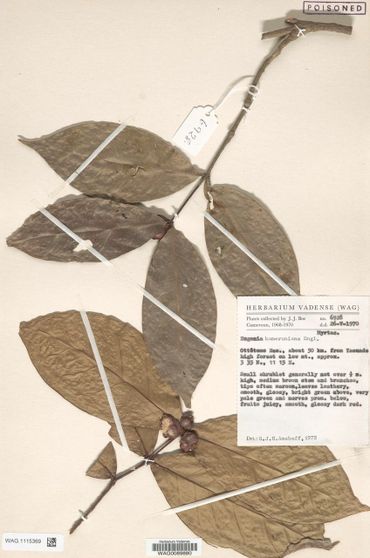
Scientists list extinct plants we may be able to revive
Naturalis Biodiversity CenterA plant or animal is extinct when the species ceases to exist by the death of the last specimen. But when exactly does a plant become extinct? Is a plant species extinct if there are still dried specimens with seeds? A relevant question, as well as the question how many of these cases are actually present in herbaria. Led by Giulia Rocchetti of the University of Roma Tre, a team of researchers started this investigation, including biologist Jan Wieringa and collection manager Roxali Bijmoer of Naturalis Biodiversity Center.
Germination
 From a list of 361 extinct plant species, specimens with fruits containing ripe seeds were searched in 61 herbaria, including Naturalis' collection. Of 161 species (45 percent), one or more specimens with seeds were found. Thus, there are at least 161 species for which seeds do still exist and that can potentially be revived. Very little is usually known about these species themselves; they were already rare and were often collected only once or twice in the distant past. Such as Achyranthes mangarevica, a distant relative of spinach and beet known only from a cliff on an island in the Pacific. And Lepidium remyi, a relative of garden cress that grew on an island of Hawaii and was last collected 170 years ago.
From a list of 361 extinct plant species, specimens with fruits containing ripe seeds were searched in 61 herbaria, including Naturalis' collection. Of 161 species (45 percent), one or more specimens with seeds were found. Thus, there are at least 161 species for which seeds do still exist and that can potentially be revived. Very little is usually known about these species themselves; they were already rare and were often collected only once or twice in the distant past. Such as Achyranthes mangarevica, a distant relative of spinach and beet known only from a cliff on an island in the Pacific. And Lepidium remyi, a relative of garden cress that grew on an island of Hawaii and was last collected 170 years ago.
To estimate whether the seeds might still be able to germinate, we looked at the germination rates of related species that are known to do so. This eliminated a number of candidates. Some seeds in herbaria were collected a long time ago; the oldest ones usually do not even have a known date. But there are also some from the last few decades. Based on the age of the seeds and an estimate of how quickly they lose their germination, a score was calculated for each species. Based on that score, a top 50 of species with the highest chance of being 'revived' again was compiled. The species could potentially be revived by sowing the seeds of the herbarium specimens or by making a tissue culture of them.
The last chance
Yet sowing the seeds of these plants will not be so simple. Not only are most of them very old, but herbaria are not set up to keep seeds alive. Indeed, most herbaria take all sorts of measures to kill unwanted organisms, such as museum beetles that prey on the dried flowers. In Dutch herbaria the protection from predation was done in the past by poisoning the plants with mercury, and in recent decades by freezing the material. Tropical seeds in particular take frost very badly, and many of the top 50 species are tropical. Possibly these conservation measures have actually killed the last chance of reviving these extinct species. But who knows what new techniques science still has in store.
More information
- The article Selecting the best candidates for resurrecting extinct-in-the-wild plants from herbaria was recently published in Nature plants.
Text: Jan J. Wieringa, Naturalis Biodiversity Center
Photos: Naturalis Biodiversity Center (lead photo: Achyranthes mangarevica Suess., a small tree known only from the islet of Mangareva in the Pacific Ocean)
